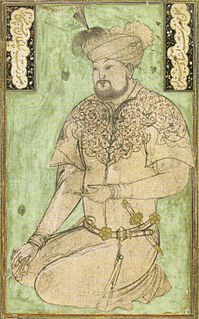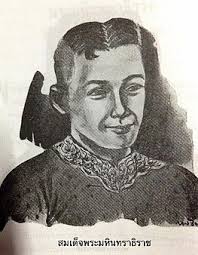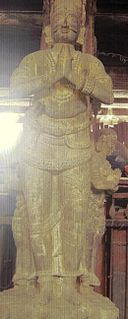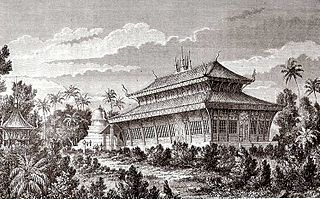 W
WMin Bin was a king of Arakan from 1531 to 1554, "whose reign witnessed the country's emergence as a major power". Aided by Portuguese mercenaries and their firearms, his powerful navy and army pushed the boundaries of the kingdom deep into Bengal, where coins bearing his name and styling him sultan were struck, and even interfered in the affairs of mainland Burma.
 W
WBozkurt of Dulkadir was a bey of Beylik of Dulkadir, a Turkish beylik (principality) in Anatolia
 W
WCankili I, also known as Segarasasekaram, is the most remembered Jaffna kingdom king in the Sri Lankan Tamil history. He was very active in resisting Portuguese colonial inroads into Sri Lanka. He also inherited his throne via palace intrigues in which number of heirs apparent died under mysterious circumstances. At the end, he was removed from power by a local uprising that led to his son Puviraja Pandaram taking nominal power from him.
 W
WMin Dikkha was ruler of the Kingdom of Mrauk U from 1554 to 1556. He was the heir-apparent of the kingdom for 22 years during the reign of his father, King Min Bin. Dikkha was an able military commander who led the Arakanese navy in Min Bin's conquest of Bengal in 1532–1533. He led the Royal Arakanese Navy in the Taungoo–Ava War (1538–45), and in the Taungoo–Mrauk-U War (1545–47). He built the Koe-thaung Temple, the largest of all temples in Mrauk U during his short reign.
 W
WKusumāsana Devi, also known as Dona Catarina, was ruling Queen of Kandy in 1581. She was deposed, but queen consort of Kandy by marriage to Vimaladharmasuriya I of Kandy from 1594 to 1604.
 W
WSultan Husayn Bayqara Mirza was the Timurid ruler of Herat from 1469 until May 4, 1506, with a brief interruption in 1470.
 W
WChe Siti Wan Kembang was a legendary queen who reigned over a region on the east coast of Peninsular Malaysia, now located within the Malaysian state of Kelantan. She is believed to have ruled in the 17th century.
 W
WLapulapu or Lapu-Lapu, whose name was first recorded as Çilapulapu or Cilapulapu, was a datu of Mactan in the Visayas. Modern Philippine society regards him as the first Filipino hero because he was the first native to resist imperial Spanish colonization. He is best known for the Battle of Mactan that happened at dawn on April 27, 1521, where he and his warriors defeated Portuguese explorer Ferdinand Magellan, who was killed in battle. Magellan's death ended his voyage of circumnavigation and delayed the Spanish occupation of the islands by over forty years until the expedition of Miguel López de Legazpi in 1564. Monuments of Lapulapu have been built in Cebu and Manila, while the Philippine National Police and the Bureau of Fire Protection use his image as part of their official seals.
 W
WMaha Chakkraphat was king of the Ayutthaya kingdom from 1548 to 1564 and 1568 to 1569. Originally called Prince Thianracha, or Prince Tien, he was put on the throne by Khun Phiren Thorathep and his supporters of the Sukhothai clan, who had staged a coup by killing the usurper King Worawongsathirat and Sudachan.
 W
WMaha Thammaracha, Maha Thammarachathirat, or Sanphet I, formerly known as Khun Phirenthorathep, was a king of Ayutthaya Kingdom from the Sukhothai dynasty, ruling from 1569 to 1590. As a powerful Sukhothai noble, Phirenthorathep gradually rose to power. After playing many political turns, he was eventually crowned as the King of Siam.
 W
WMahinthrathirat was king of Ayutthaya 1564 to 1568 and again in 1569. He ruled his first reign as a vassal of Toungoo Burma before restoring his father in 1568 as the sovereign king. He became king again in 1569 after his father's death during the Third Siege of Ayutthaya by Toungoo forces. Mahinthrathirat was the last monarch of the Suphannaphum Dynasty as the kingdom fell to the Burmese in 1569. Mahinthrathirat was known for his efforts to counter Burmese and Phitsanulok power by seeking alliance with Setthathirath of Lan Xang.
 W
WMirza Abu Bakr Dughlat was a ruler in South-Western part of present Xinjiang Uyghur Autonomous Region of China, an amir of the Dughlat tribe. In the middle of the fifteenth century, in 1465, he founded in Western Kashgaria a kingdom based at Yarkand, a fragment of Moghulistan. It included Khotan and Kashgar; he took Kashgar in 1480. He was the son of Saniz Mirza, son of Mir Sayyid Ali, the latter was amir in Kashgar who regained control of the city by Dughlat dynasty, having expelled Timurid local ruler in 1435.
 W
WNaresuan the Great or Sanphet II, was the 18th monarch of Ayutthaya Kingdom and 2nd monarch of the Sukhothai dynasty. He was the king of the Ayutthaya Kingdom from 1590 and overlord of Lan Na from 1602 until his death in 1605. Naresuan is one of Thailand's most revered monarchs as he is known for his campaigns to free Ayutthaya from the vassalage of the Taungoo Empire. During his reign, numerous wars were fought against Taungoo Burma. Naresuan also welcomed the Dutch.
 W
WViswanatha Nayak was the Vijayanagara viceroy to Madurai in south India during the 16th century. He later became the ruler of Madurai after the fall of the Vijayanagara empire. He is the founder of the Nayak dynasty of Madurai.
 W
WPuviraja Pandaram ruled the Jaffna kingdom during a period of chaos during and after the death of his father Cankili I in 1565. He became king in 1561 following a local uprising against Cankili I. Although he was the nominal king, Cankili I wielded real power behind the throne until his death in 1565. After Cankili's death, Puviraja Pandaram lost power to one Kasi Nainar and Periyapillai. After the death or abdication of Periyapillai in 1582, Puviraja Pandarm was nominated as the king for the second time.
 W
WSingai Pararasasegaram, apart from Cankili I (1519–1561), was one of the most well known kings of the later Aryacakravarti kings of the Jaffna kingdom. He was also Cankili's father.
 W
WPhotisarath son of King Visoun of Lanxang, is considered to be the most devout of the Lao kings. He banned spirit worship and built temples upon the sites of spirit shrines. His elephant fell and crushed him while he sought to display his prowess to the diplomatic corps. His son Setthathirath returned from Chiang Mai to succeed him to the throne of Lan Xang.
 W
WChettathirat or Ramathibodi II was the King of Sukhothai from 1485 and King of Ayutthaya from 1491 to 1529. His reign was marked by the first Western Contact with the Portuguese.
 W
WMin Razagyi was king of Arakan from 1593 to 1612. His early reign marked the continued ascent of the coastal kingdom, which reached full flight in 1599 by defeating its nemesis Toungoo Dynasty, and temporarily controlling the Bay of Bengal coastline from the Sundarbans to the Gulf of Martaban until 1603. But the second half of his reign saw the limits of his power: he lost the Lower Burmese coastline in 1603 and a large part of Bengal coastline in 1609 due to insurrections by Portuguese mercenaries. He died in 1612 while struggling to deal with Portuguese raids on the Arakan coast itself.
 W
WSetthathirath or Xaysettha is considered one of the great leaders in Lao history. Throughout the 1560s until his death, he successfully defended his kingdom of Lan Xang against military campaigns of Burmese conqueror Bayinnaung, who had already subdued Xieng Mai in 1558 and Ayutthaya in 1564. Setthathirath was a prolific builder and erected many Buddhist monuments including Wat Xieng Thong in Luang Prabang, Haw Phra Kaew, Wat Ong Teu Mahawihan and the Pha That Luang in Vientiane.
 W
WSöyembikä was a Tatar ruler, xanbikä. She served as regent of Kazan during the minority of her son from 1549 until 1551.
 W
WThazata was king of Arakan from 1515 to 1521. He was a son of King Dawlya, and governor of Ramree when he was selected by the ministers to succeed King Saw O. He moved the palace from Mrauk-U to a place called Daingkyi. He died in 1521.
 W
WVisoun was the king of Lan Xang from 1500 until 1520. He was the seventh son of King Sai Tia Kaphut, King of Lan Xang. He was appointed as Governor of Vientiane in 1480 and as Chief Minister with the title of Phya Sena Muang in 1491 with the reign name of Visoun (Lightning). He served as Regent for his minor nephew from 1495 to 1497. He deposed his nephew and was proclaimed as King in 1500. He ascended the throne and was crowned King in 1501. His reign was prosperous and peaceful with a large number of shrines and monuments being constructed, including the Maha Vihara of Wat Visoun, which he built to house the palladium of Luang Prabang, the Phra Bang, which had been at Vientiane since 1359. A number of important religious texts and literary works were composed or translated into Lao during his reign. He died at Vientiane in 1520.
 W
WYotfa or Kaeofa was the 14th Ayutthayan king from the Suphannaphum Dynasty